|
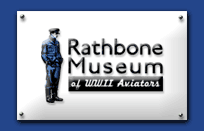 |
|
|
 |
 |
 |
 |
|
 |
 |
 |
|
|
|
 |
|
|
|
Royal Navy Volunteer Reserve Shirt Dress to a Sub Lieutenant, Air Branch of the Fleet Air Arm |
|
|
|
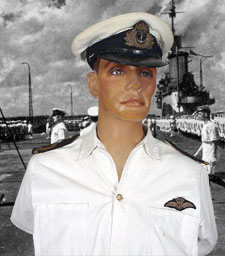 |
|
 |
|
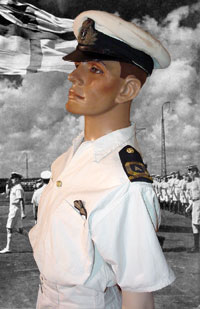 |
|
|
|
In Tropical climes, the British Navy had the option of wearing white shirt dress which, for officers, consisted of a white, short sleeve shirt, shorts, hose, white cap cover and white shoes. Rank was designated by shoulder boards. Flight personnel were designated by wings usually pinned to the chest above the left pocket. This was typcially ship-board and on-leave wear. Active duty pilots in action in N. Africa and other rugged stations wore various forms of khaki drill just like their army and RAF counterparts. |
|
|
|
The side view shows of the S/L's boards and the white cap. An officers cap was issued with covers to change for various wear. The standard form was the navy blue wool and the white cotton duck cover fitted over it. The S/L is marked as being in the Volunteer Reserve (square loop) air branch ('A' symbol) of the Royal Navy. |
|
|
|
While his shipmates parade and salute the jack behind him, this sub-lieutenant (designated by one rank curl) stands at ease. The shirt was unique in that it was a pullover - it did not button down. It had one gilt button at the neck. The shirt was extra long to avoid pulling out of the shorts during active wear. The shorts were extra long and had two wrap-around buckles. |
|
|
|
*Click on any picture to see full size. |
|
|
|
|
|
|
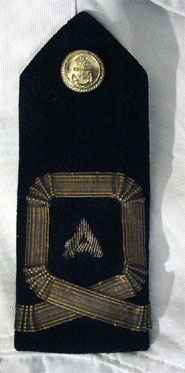 |
|
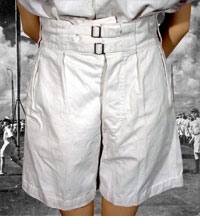 |
|
|
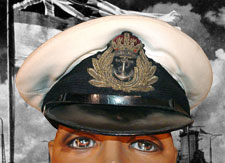 |
|
|
| Another close view of the cap showing the fine bullion in the Royal Navy cap device. As the hat became more salty (worn on duty) the gilt bullion would fade or become green. This was always a desireable trait to show one's experience. |
|
|
| A close view of the shorts showing the double buckle and the deep pleats. |
|
|
|
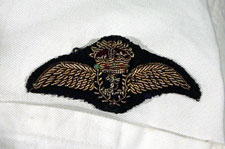 |
|
|
|
|
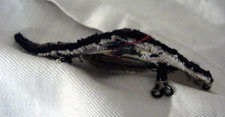 |
|
|
| A close view of the board shows the single rank curl sewn out of a strip of gilt metal braid. The squarish loop was unique to the Royal Naval Volunteer Reserves. The Volunteer Reserve was instituted in 1903. The air branch 'A' is bullion sewn directly into the wool. Above is the gilt officer's version of the Royal Navy button. |
|
| This owner dcided to attach his wing with hooks and llops sewn into the back of the wing. |
|
|
| The wing worn on the chest was the same size and type as worn on the service dress sleeve. The wing was usually attache to a pin or snaps for easy removal for laundry. |
|
|
|
*Click on any picture to see full size. |
|
|
|
|
|
|
|
|
|
|
All images © 2000-2002 Tod Rathbone |
|
|
|
|
|
|
|
|
|
|
|
|
|
|
|
|
|
|
|
|
|
|
|
|
|
|
|
|
|
|
|
|
|
|
















